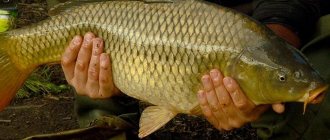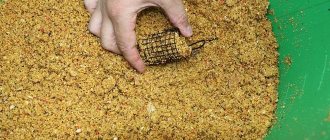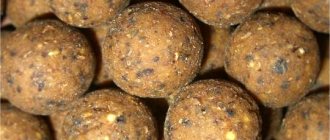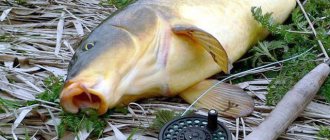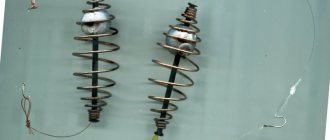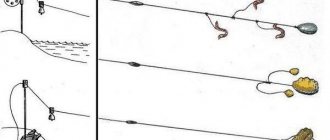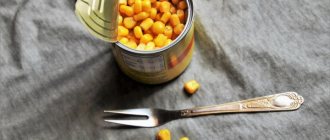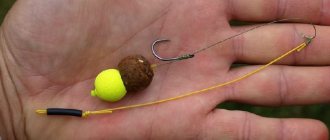Corn is a healthy and tasty product. With the right storage technologies, you can enjoy excellent cereal all year round.
The energy value of corn is very high. That is why many peoples have valued cereals for thousands of years as highly as we value the main dish of our table - bread. In one cob of the product you can’t count a wide variety of vitamins and microelements. It is also rich in unsaturated fatty acids, which protect against insidious cancer diseases. Corn is also good for preventing cardiovascular diseases. If you eat it regularly, cholesterol in the blood will decrease and blood vessels will become more elastic.
The cereal also promotes good digestion, improves metabolism, and serves as a sedative for the central nervous system. Corn oil cures liver and gallbladder diseases. A decoction of the hairs that surround the cob reduces blood sugar and blood pressure. Well, the product is also very low in calories, so it can be safely added to the diet for any weight loss diet.
How to store corn and where depends mainly on what type of grain it is:
- fresh;
- dried;
- frozen;
- sour.
You can also store boiled corn for some time.
At home, the cereal is usually kept in the refrigerator or a special room where low humidity is maintained (this is how dried corn is stored).
How to store corn after fishing
How to store bait after fishing. A method for the lazy!!
The work of the Optimist Magnet Corn bait.
Fishing with Tiny Artificial Worms - Bluegill & Berkley GULP Alive!
buy giant corn for fishing
How to tie a simple CARP RIG
CATCH and COOK: Salmon Roe!! —RAW AND COOKED
Roach on a leash 2
1 in MILLION BLUE LOBSTER CAUGHT in STORM DRAIN!
Father/Daughter Mahi Fishing Trip! Catch, Clean & Cook!
Monster Goliath Groupers with NFL Linebacker Sam Barrington – 4K
How to store bait after fishing. A method for the lazy!!
A hearty salad recipe made from the simplest ingredients
A very simple and satisfying salad, where all the ingredients are ready right away and all that remains is to chop and mix everything. The perfect man's salad. And healthy, and with meat. Well, with mayonnaise, of course.
And if you have doubts about the usefulness of mayonnaise, then try to prepare its homemade version, and you will see that it contains only butter, eggs and mustard - nothing that should be avoided.
//youtu.be/vVvNKK5YpXs
Ingredients:
- Sauerkraut – 150 g
- Half an onion
- Ham 80-100 g
- Green peas - 1 small jar of 150-170 ml
- Corn - 1 small jar 150-170 ml
- Mayonnaise - 2-3 tbsp.
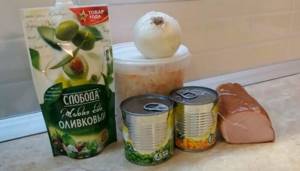
Well, there is nothing complicated in preparation: mix squeezed cabbage with chopped onions, pieces of ham, corn and peas. Then add mayonnaise, mix and you're done.
The main thing here is not to forget to squeeze the cabbage and drain the juice from the jars, otherwise it will not be tasty at all.
Product advantages
Corn is included in the group of vegetable attachments. The grains have distinct benefits:
- fish like the aroma, taste and color;
- constant availability of bait on store shelves;
- reliable fastening on the hook;
- grains do not dissolve in water;
- the degree of softness and hardness during cooking varies;
- It is allowed to mix flavors with grains (this improves the quality of feeding fish);
- comparatively cheap.
The attractiveness of corn to fish is explained by its chemical composition. This cereal crop is low in protein and high in carbohydrates, among which starch predominates. Fat in grains is represented by valuable unsaturated acids (total amount - no more than 5%). Corn contains a high percentage of phosphorus and is rich in carotene and vitamin E.
What is fermentation
Before we begin preparing and directly implementing the process of preparing fermented corn for fishing, we will introduce the fisherman to this term, revealing its essence and the principle of changing the original product. To a greater extent, the process is a kind of chemical reaction during which sugars are broken down under the influence of enzymes. This action is facilitated by the presence of yeast and sugar added to ripe corn grains previously soaked in ordinary water.
As a result of the joint fermentation of products, the result of the chemical reaction is the production of grain with a sour smell and taste, which has a positive effect on the sense of smell and taste buds of the fish, which is attracted to the aroma of the grain served in the equipment. Despite the apparent complexity of preparing the product, in fact, grain fermentation is an almost automated process, which, after filling with the ingredients necessary for fermentation, does not require any manipulation by humans and flows independently, requiring only the creation of favorable conditions and timely cessation of the reaction, which prevents the product from fermenting and lose their unique properties.
Important! Corn, with its sourness and subtle sweetish taste, is especially effective at attracting carp.
Therefore, at present, fermented corn for carp fishing is often found in fishing stores on carp fishing shelves, as a promising and priority bait along with boilies, which is popular among fishermen who know a lot about effective baits.
How to cook?
To prepare bait, use raw or canned corn . When buying grains in a jar, you must choose only high-quality products, since damage to the integrity will not allow the grains to strengthen on the hook, and the small size will attract insatiable small things.
We will tell you in more detail how to prepare bait for fish (including carp) from corn.
From sweet corn
This is ready-made corn from cans, its special feature is the inscription “sweet” on the label. The advantage of this bait is the absence of labor-intensive processing before use. The jar should be opened and the grains should be placed on the tackle. For fastening, the “hair-mounting” method is most often used.
How to make your own sweet corn:
- Soak grains from a ripe yellow cob in water. We stand for 1 to 3 days.
- Pour water over the swollen corn, place on low heat and boil for 30-60 minutes. After the water has boiled, add sugar or honey.
- Remove from heat, drain the water, add vanilla to the beans.
- Let the bait sit for 24 hours. During this period, lactic acid will evaporate from the corn and a characteristic odor will appear.
Steaming the grains
The cooking process involves soaking the grains in warm water for 24 hours. During this period, be sure to change the water 2-4 times. Next, a thermos will come in handy. It needs to be filled a quarter full with grains, then add flavoring or spices (of your choice). Fill the rest of the volume with boiling water and close the thermos tightly. The corn will be ready in 4 hours.
From fermented sour
The total preparation time for such bait takes up to 4 days. It is necessary to prepare corn for biting in advance. The correct fermentation algorithm includes the following steps:
- Pour warm water over the grains and boil for 30-40 minutes. Drain the water.
- Pour boiled corn with new cold water, add 1 tbsp. sugar per 1 liter of water, dry yeast (10 g of yeast per 1 kg of corn). Honey can be used as a flavoring additive.
- Mix the resulting mixture and place in a glass container.
- Pour sunflower oil on top - the product will prevent air penetration.
We recommend reading: Not enough salt in mushrooms
Fermentation occurs when yeast bacteria absorb sugar and release alcohol and acid. It is prohibited to close the container at this time due to the abundant release of carbon dioxide. Fermentation is necessary to break down the tough outer skin of the beans. As a result, the bait will become soft, and nutrients will actively flow into the water.
You can also watch the video to learn the recipe for making fermented corn:
Inedible imitators
These are inedible corn kernel simulants. Synthetic plastic is used to make them. In appearance, such corn resembles a small container with chemicals that attract fish and activate the bite. Among the advantages of the bait are the possibility of reusable use and quick effect .
The group of artificial baits includes products. Such grains are an alternative to reusable baits. Their peculiarity is that they decompose in a body of water. Made from soft materials, available in a liquid package.
This is canned corn, which is prepared according to a special recipe to improve the bite. You can purchase such a product at any specialty store. Fishing corn is produced in cans; the grains are the same size, but vary in color saturation and smell.
Producers are also concerned about maintaining the integrity of the corn . The product contains various additives to increase the shelf life of the grains.
What brands do fish like?
Residents of water bodies show increased interest in well-known and proven brands. These are "Bonduelle" and "Vernet". Experienced fishermen advise buying brand products not in cans, but in glass containers (the best grains are packed here).
Among artificial bait manufacturers, Enterprise Tackle stands out. The developers promise that the baits retain their quality even after 6 hours in the water.
Of the companies producing fishing corn, the following deserve attention:
Rules for storing canned corn
Preservation helps increase the shelf life of the product to 2-3 years. This method preserves the sweetness of the grains, which can be used year-round in salads. It should be taken into account that the air temperature in the storage room should not exceed 25 degrees, and humidity – 75%.
In order for the product to retain its beneficial properties and taste, it must be preserved, observing the following principles of the recipe:
- choose small cobs of the same length;
- cleaned of leaves, hairs and washed;
- cook for 7 minutes;
- cool, place tops up (about 9 cobs can be placed in one 3 liter jar);
- fill the container with boiling water;
- in 5 minutes the water is poured into a saucepan, brought to a boil, the heads of cabbage are poured again, the procedure is carried out 3-4 times;
- roll up the cans.
Opened canned corn is stored in the refrigerator for no longer than 3 days, as it quickly turns sour. If tin cans are depressurized, the grains should be transferred to a plastic container and consumed within 24 hours.
Attention! When the jar is opened, do not drain the brine. Its absence will accelerate the spoilage of the product.
If you decide to fish for carp
The bait is successfully used for catching carp using a float rod, feeder tackle and various types of donks. Carp loves yellow, overripe corn of late varieties. You can buy cobs or raw threshed grains at the farmers market.
At the first stage, you need to pour the corn into an iron container, fill it completely with water and leave for 1-3 days. This is the time for the grains to swell. Fermentation also occurs in the first 24 hours.
Signs of fermentation are fermentation and water turning yellowish, with a characteristic odor . During the fermentation process, the top skin disintegrates, the enzymes from the grains soften and flow better into the water - the corn becomes more attractive to carp.
What actions to take next?
- The water in which the grains were infused must be drained.
- Fill the corn with fresh water and boil over heat for 60 minutes.
- Add flavorings - sugar, honey. Sweetened grains will attract carp better than “unleavened” grains.
How to store boiled corn
It's best to boil as much corn as you can eat at one time. It tastes best when piping hot, hot and fresh. Heated corn greatly loses its taste. And here the question arises: how to keep boiled corn hot for as long as possible. You don’t have to drain the water or remove it from the hot pan by wrapping it in a warm blanket. This will help keep the corn hot for several hours. You can also put the corn into separate bags and wrap it in this form. You can also use several layers of food foil for wrapping, this will also help keep the corn hot longer.
Boiled cobs will spoil within a day if you leave them in a pan, so here are several ways to properly store boiled corn:
- wrap each head of cabbage in cling film and place in the refrigerator;
- Place corn on the cob in a food container and then refrigerate;
- Before storing corn after cooking in the freezer (on the cob or in grains), you should alternately dip the heads of cabbage in hot and cold water several times, dry them and place them in sealed bags.
Attaching bait to a hook
Baiting corn grains is a responsible process on which the overall success of fishing depends . It is allowed to plant from 1 to several corn, depending on weather conditions, the depth of the reservoir, and the quality of the bite.
To catch carp, it is advisable to use a large hook, on which 8-10 corn are attached. When fishing for bream, it is recommended to combine corn and worms (maggots). If fishing takes place on a muddy bottom, you need to take artificial corn.
Variety of corn grain fixing:
- Plant 1 grain. Small or medium sized hooks (numbers 16 to 20) are suitable. You can insert it by making a puncture across or through the side to the middle. You can also pierce the edges of the grain. The specific method is selected depending on the size and hardness of the grain.
- Features of the attachment of several corns. You need to plant it not in the center, but on top of the grain.
To build a bait from maggots and corn, you need to put 2-3 larvae on the hook, then 1 grain, then 1 or 2 more larvae. When creating a “sandwich” from corn and a worm, you need to put 1-2 large earthworms on the hook, and 1-2 grains on top. If the worm moves in the water, the chances of attracting fish will increase.
There are several ways to prepare corn for fishing. This is the preparation of sweet bait, steaming or fermentation. Also, to improve the bite, experienced fishermen advise adding flavorings, and when attaching bait, making “sandwiches” from corn and a worm.
If you find an error, please select a piece of text and press Ctrl+Enter.
Variety of corn grain fixing:
How to store corn
How long corn can be stored depends on the availability of climatic conditions that are vital for corn. Depending on how corn is stored - fresh, dried, sour or frozen, it needs a certain temperature and humidity. Today there are not many ways to store corn at home:
- conservation;
- fridge;
- freezer;
- rooms with low humidity (for storing dried corn).
How to preserve corn and porridge for bait cooked for fishing for a long time?
After fishing, there are often leftovers that could be used for the next fishing trip, just how to save them.
Try freezing it in the freezer. The porridge will not lose any properties; the next time you get ready to go fishing, take this bag of porridge-bait with you; by the time you get there, it will have time to melt. We ourselves have done this more than once. I even froze the worms, however, later they were not caught with them, but chopped up and also added to the bait.
After fishing, there are often leftovers that could be used for the next fishing trip, just how to save them.
Fermented Corn and Fermentation Methods
What is fermentation? This is essentially just fermentation, where the components react, releasing ethanol and carbon dioxide.
To ferment corn we need:
• corn (choose without signs of fungal disease); • any sweetener: molasses, sugar, honey, even jam may be suitable; • dry yeast.
Separate the corn kernels from the base and set to cook for approximately 50 minutes. After the grains are cooked until half cooked (by pressing on the corn, it should flatten but remain intact), drain the water into a separate container. After cooling the broth a little, add sweetness. Honey is considered the best ingredient, but this is at your discretion. After mixing well, add 20 g of yeast and pour the finished starter into the boiled corn. Place everything in a 3-liter jar and pour a small amount of vegetable oil on top. It is not permissible to close the jar tightly, as it may shoot. The gas released during fermentation should escape little by little. After the corn has been fermented for 4-5 days, it can be considered ready.
You need to take: • washed corn; • 5 liter bottle; • kefir – 1 glass (250 g); • vegetable oil; • water.
Pour the corn into a bottle, fill it with water, add kefir and shake well, at the end add the oil and close the lid, but loosely. You can make more corn like this so that there is enough for a couple of times. The supply of such food will not be lost; you will take the amount you need; the rest can be left directly in the jar. It will ferment further, which will make the fish love it more. These are some very simple tips that will help you catch fish.
Well, what should you do if you have a lot of corn, but you won’t be able to go fishing in the near future? I don’t want to throw away the bait, I managed to catch a lot of fish with it. This article will teach you the best way to store fermented corn for fishing. We will reveal a couple of secrets of food storage.
Storing fermented corn for later use.
Method No. 1. It is considered the simplest: having filled a large container with water, put a jar or 5 liter bottle of corn in it. One condition is shade. The container with water and bait should be in the shade; if there are no plants, make an artificial shade yourself by covering the entire container with a tarpaulin or laying wooden planks on top. Cover everything with branches or grass.
Method No. 2. This method allows you to preserve food for several months:
1. Strain the corn through a colander. 2. Dry the corn kernels in the sun, placing them in a ventilated place. 3. Pour into a bag, you can use a product with a slider. 4. Release as much air as possible. 5. Tie the food neatly or fasten the slider. 6. Using wide tape, we begin to wrap the packaging in order to avoid an unpleasant odor in the freezer.
Putting it in the freezer stops the fermentation of the corn kernels. If you make the preparations in small portions, this will allow the rest of the food to sit for some time until you get ready to go fishing.
Method No. 3. This method is effective, but has a big disadvantage - the smell. In order for stocks of such food to last for a long time and to be able to use them at any time, it should be preserved. To do this you will need:
• banks; • covers; • acetylsalicylic acid tablets.
Step-by-step conservation process:
1. Wash jars in soda water - 1 tbsp per 1 liter of water. l. soda 2. Rinse under warm running water. 3. Sterilize jars with lids in any convenient way. 4. Rinse the corn in a colander under running water and let the grains drain. 5. Scatter the grains equally into the jars. 6. Fill the jars with corn with hot water and cover with lids, do not roll up. 7. Place a large saucepan and cover the bottom with a towel. 8. Place the full jars into the pan and fill with water. 9. Bring to a boil and make sure the water is constantly boiling, cook for 4 hours. 10. When the time is up, we take out the tanks, put 2 tablets of acetylsalicylic acid in each jar and roll them up (we are counting on a liter jar). 11. Turn over and wrap with warm blankets, remove the covering only when everything has cooled completely.
Using these recipes, you have the opportunity to always have excellent bait for fishing on hand. And these recipes are also suitable for pearl barley.
Pour the corn into a bottle, fill it with water, add kefir and shake well, at the end add the oil and close the lid, but loosely. You can make more corn like this so that there is enough for a couple of times. The supply of such food will not be lost; you will take the amount you need; the rest can be left directly in the jar. It will ferment further, which will make the fish love it more. These are some very simple tips that will help you catch fish.
How to prepare corn for fishing
Some fishermen believe that you can only fish with a rod or donk by baiting a worm or maggot! Don't you think this approach is too banal? Especially in these times, when there are so many things around that are suitable for the role of bait.
Open your eyes, read the literature and you will understand that there are things that you did not pay attention to or could not even think about that could be used as bait.
In this article we will talk about corn and its properties as bait. I will try to answer such basic questions as:
- What's biting on corn? How to prepare corn for fishing? How to put corn on a hook?
Preparing corn
First you need to prepare the corn and separate the low-quality grains. The procedure is carried out manually and allows you to get excellent bait, which, undoubtedly, will not come off the hook while casting the tackle.
Of course, the work takes a long time, especially if a large amount of corn is needed. Before you begin, you will need to select a suitable container. Basically, they use a jar or bottle with a wide neck. You also need to buy yeast and sugar. It is important to place all the ingredients in warm water, which will allow the sugar to quickly dissolve, which will be better absorbed into the corn. Room temperature is required for cooking.
What kind of fish bites on corn?
Here is a short list of cases when you can and should take corn with you:
- carp fishing; carp fishing; crucian carp fishing; grass carp fishing; roach fishing.
It is clear that almost any non-predatory fish can bite on plant bait, and you can safely count on a wider range of fish species in the cage.
The lover of this bait, the so-called “glutton”, is carp. He will not pass by the juicy grain of corn. When fishing for carp, it is used as both bait and groundbait. Because corn is a classic carp bait. Most of the winners in carp competitions used corn in various variations.
Fermented
It is considered the most effective bait for the carp family. Fermented corn has a sour taste and soft texture due to the fermentation process. The cost of its preparation is much lower than its ready-made counterpart. The only drawback is the preparation time, which is about 4-5 days. Pros of Fermented Corn:
- The fish senses the sour smell of the grains and swims more often to the bait.
- The soft consistency allows the fish to feed and not get full, since the fermented grains are quickly absorbed and digested. Therefore, the fish will not leave the feeding place.
Roach
If there are roaches in the reservoir where you will be fishing, then there is a chance to catch a large specimen of this fish using corn. Large fish bite on any type of grains, but prefer boiled ones.
It lives mainly in lakes and ponds where there are thick thickets. In the spring, tench begin to take on various plant baits, including corn. In summer, tench do not pay attention to it, but prefer animal baits.
At the same time, fishermen sort the already prepared grain, selecting defective cracked corn and mashing them, adding them to the bait compositions, thus adhering to the rule of the presence of a certain part of the bait in the bait composition supplied to the fishing zone. And, of course, independently preparing fermented corn for fishing is much cheaper in cost than buying store-bought baits, which is also important in very expensive outdoor sessions for carp fishing, both in terms of equipment, and in terms of purchasing bait compositions and used in fishing bait Therefore, there is a reason for every fisherman to master the process on his own, thereby increasing the chances of success and saving his budget.
How and how much to cook
It is necessary to cook only corn that has not been blanched before freezing.
How to prepare corn for fishing?
In order to successfully fish with this bait, you need to figure out where to buy or how to prepare .
You can buy it in almost any fishing store, in any color and with any aroma. But in order to save money , go to the grocery store. I would like to immediately warn you about some of the disadvantages of the grocery option. The corn kernels in the jar are small , which means you'll be plagued by insatiable little things. Half of them are cut , as a result the grains will not stick well to the hook, and the fry will easily knock them off.
And so let's get started. Our corn needs to be washed and soaked in water for 1-3 days . Sometimes corn is soaked with hemp. You need to focus on the swelling of the grains: if they are swollen, then it’s time to start cooking.
You need to cook over moderate heat so as not to scorch the grains for 0.5-1 hour . You also need to add sugar to the pan, 1-2 tbsp. l. for 1 liter of water . As a result, the grain should be soft, but not fall apart.
After cooking, the grains are left to infuse in water for another 1-2 days . It is at this moment that our bait can be given a spicy aroma, for example:
- vanilla; plum; banana.
Naturally, these are not all the aromas that you can add - fishing loves experiments. Many fishermen say that you need to add honey , but I believe that it should be added exactly when the corn is infused, since honey loses its quality after heat treatment.
Athletes who take part in Carp Fishing competitions use the corn fermentation method. After watching the following video, you will understand that there is nothing complicated in this matter.
Fermentation of corn for fishing
Also, some fishermen believe that slightly sour corn attracts fish much more strongly, so they ferment it for another 2-5 days at room temperature.
If you are not interested in this, you can preserve the corn by placing it in the freezer.
Storing fermented (sour) corn
You can’t eat sour cereal, but it’s useful for fishing. Crucian carp, carp and other fish bite well on fermented grains. Preserving such corn is not difficult - you just need to put it in the refrigerator, and that’s it. Well, except that you have to make sure that the storage container is airtight, otherwise other products will become saturated with unpleasant “sour” odors. Fish will peck at fermented corn for three weeks, and then it will become unattractive to these unassuming creatures.
Corn is tasty and very, very healthy. It doesn’t hurt to save it for future use to enjoy the pleasant taste not only in summer, but also in autumn and winter.
- we clean the cobs from tassels and rough leaves;
- wrap each of them in cling film or put them in food bags and close tightly;
- put it in the freezer.
We use raw corn
Also, in addition to canned and cooked, you can use raw corn. But it should be “milk” , this is the corn that seems to have formed and has a milky color. You can continue to fish with it until it begins to harden.
I hope I was able to answer the questions: what is caught on corn and how to cook it. Corn fishing is a lot of fun because you won't get bored with the small stuff.
about how to put corn on a hook in the next article.
A couple of tips:
- When purchasing canned corn, give priority to Bonduelle. In my opinion it is of the highest quality. You can also make hominy from corn grits. When infusing boiled corn, divide it into several vessels and use different flavors
If you have interesting information on this topic, then leave a comment and share your experience .
Naturally, these are not all the aromas that you can add - fishing loves experiments. Many fishermen say that you need to add honey , but I believe that it should be added exactly when the corn is infused, since honey loses its quality after heat treatment.
Fermented corn
How to Make Fermented Corn
Hello dear fishing lovers! Today I’ll tell you how to properly ferment corn
for carp fishing.
Previously, I soaked the corn for fermentation for a day in cold water; in the summer I do not recommend keeping it for more than a day, since it begins to ferment on its own, and we need to control the fermentation process. So the corn is soaked, it has swollen a little having absorbed water. I recommend that before soaking corn for fermentation, rinse it well several times in running water and remove any additional impurities that are necessarily present in any corn. These are all kinds of sticks, seeds, other grains and all kinds of garbage. Now let's move the corn
into a saucepan, fill with water and put on fire.
Preparing corn for fermentation
So, we filled the pan with corn, poured water and set it to cook. We collect water in such a way that the corn will absorb some of it and some of the water will boil away. To make the corn syrup more tasty, add a few tablespoons of sugar and put the pan on the fire. How long to cook fermented corn
: if the corn has absorbed a sufficient amount of water during preliminary soaking, then there is no point in cooking for more than half an hour or forty minutes, as it will begin to burst.
But it's better to look individually. Corn and corn are different. Some types of corn can be very dry. In this case, I came across some great corn. Large grains, no debris. I’ll go to the market and buy another kilogram, I think twenty or thirty. I think it will be enough until the end of the season. So, keep an eye on the corn so it doesn't fall apart, but it also depends on what you're going to do with it. If this fermented corn
goes into bait, you can boil it so that it opens. If you are preparing fermented corn for bait, it is better to keep the grains whole. This will make them easier to install and will make them look more presentable. Well, let's wait for the corn to boil.
Subtleties of preparing fermented corn
So the corn has cooled down, the syrup has also cooled down. We need to cool it down to about forty degrees and now we need to make sourdough. To do this, we take baker's yeast at the rate of ten grams per kilogram of mixture. And we need to add something sweet to our starter. It's either jam or molasses. I'll add molasses. To make it easier to dissolve the yeast in the syrup, I pour it into a liter bottle, fill it all with syrup and shake it well. Otherwise, if you directly pour yeast into the starter, it will float and you will have to stir for a long time. I also poured molasses into the jar, now I’ll add yeast. And I’ll pour about half an eggplant of the corn syrup in which the corn was cooked. Now shake it all well. Both yeast and molasses are mixed evenly into the corn syrup. And now I will pour this mixture into a common jar. Our syrup is ready. Now we need to put the corn in a pitiliter bottle and fill it with syrup.
The last stage of corn fermentation
After filling the bottle with corn not to the top, leaving some space for foam, pour the syrup here. Pour enough syrup to cover the corn by about two centimeters, all the grains. Close the bottle with a lid and shake well.
And now the most important thing. Fermentation process
, as you know, this is a fermentation process without the presence of oxygen. Under no circumstances should the lid be closed, otherwise all the gases that are formed during the fermentation of corn will inflate the eggplant, it will simply burst.
After all this has been done, put the bottle in a warm place. Ferment
The corn will last for about three to four days.
With the correct dosage of yeast, the process can be left for no longer. If you add too much yeast, the process becomes very active and the smell of fermented corn becomes not so much sour, but rather vomit-like. That is, a chance to screw up the whole procedure. This has happened to me a couple of times too, so try not to overdo it with yeast. It’s better to put less than more, since the corn itself, even without yeast, can begin to ferment
, and yeast only starts and accelerates this process.
So, we filled the pan with corn, poured water and set it to cook. We collect water in such a way that the corn will absorb some of it and some of the water will boil away. To make the corn syrup more tasty, add a few tablespoons of sugar and put the pan on the fire. How long to cook fermented corn
: if the corn has absorbed a sufficient amount of water during preliminary soaking, then there is no point in cooking for more than half an hour or forty minutes, as it will begin to burst.
But it's better to look individually. Corn and corn are different. Some types of corn can be very dry. In this case, I came across some great corn. Large grains, no debris. I’ll go to the market and buy another kilogram, I think twenty or thirty. I think it will be enough until the end of the season. So, keep an eye on the corn so it doesn't fall apart, but it also depends on what you're going to do with it. If this fermented corn
goes into bait, you can boil it so that it opens. If you are preparing fermented corn for bait, it is better to keep the grains whole. This will make them easier to install and will make them look more presentable. Well, let's wait for the corn to boil.
What are the benefits of home fermentation?
Before you cook corn, you need to understand what result you want to achieve.
Carp are interested in 3 aspects of this bait:
- Fish like the sour aroma of fermented grains. It turns ordinary corn into a pleasant treat for carp. And the soft consistency makes it convenient to eat.
- Once in the water, the fermented product slightly changes its composition. This helps the detection of bait and bait by local inhabitants.
- Processed corn is quickly digested. The carp cannot get enough and tries to find a new portion, getting hooked.
The most effective would be to use fermented grains both for complementary feeding and as bait. Canned ones won't work. They don't attract fish that much.
For full-fledged fishing, you may need up to 2.5-3 kg of corn per day.
Another aspect of using homemade bait is directly related to financial issues. In other words, it's much cheaper. You don’t have to waste your time, go to the store and buy specialized products for carp fishing. You can even find fermented corn. But it is much more economical to buy a couple of kilograms of grains, a packet of yeast and sugar to prepare a homemade product according to a simple recipe.
How to store corn
This crop has been grown for more than seven thousand years and it’s clear why... Corn is a juicy and sweetish cereal that adults and children look forward to every summer. Summer residents who were lucky enough to reap a rich harvest of corn also want to know how to store corn. And this question worries everyone who is used to stocking up on this cereal for future use and not buying it in canned form when the need arises. So, how long can you store corn, and how to do it correctly?
The most important thing about storing corn
Boiled corn, even in the refrigerator, turns sour quite quickly. Try to cook as much of it as you can eat in a day.
We recommend reading: How long can protein custard be stored before use?
It is most profitable to store only corn kernels in the freezer. This will save a lot of space.
In order for dry corn to last until planting and even until the next harvest, you need to carefully protect it from mold.
Preparing to Ferment Corn
Corn fermentation depends on the quality of the raw material. The entire cooking process begins with the preparatory stage. The grains must be thoroughly washed to get rid of dust and dirt, pebbles and other inedible impurities. After this, you need to fill them with water and leave them for a day, maybe a little longer. This is necessary for the grains to swell and become saturated with water.
In the summer, you need to keep a close eye on soaked corn. It can ferment on its own, ruining the creation of complementary foods.
Then it all depends on the quality of the raw materials:
- dry and shriveled grains require longer cooking to soften;
- fresher grains, additionally soaked in water, will cook quickly.
The corn must be filled with water, taking into account that some of it will be absorbed and evaporated. After this, the product is simmered over low heat for forty minutes to an hour so that the future bait becomes soft. For complementary feeding, grains that have boiled to such an extent that they burst are better suited. It is more convenient to place whole grains on the hook.
Salad with sauerkraut and fresh cucumber
Sour cabbage goes well not only with canned food, but also with fresh vegetables such as cucumbers and tomatoes. A good way to diversify an ordinary salad.

//youtu.be/LMSCv1Nbmss
Ingredients:
- Sauerkraut – 200 g
- Cucumber - half a medium one
- Cherry tomatoes - 2-3 pcs.
- Canned corn - 2-3 tbsp.
- Half a red onion
- Sunflower oil for dressing
- Greenery
Preparation:
Lightly squeeze the cabbage so that the salad does not turn out watery. Cut cucumbers, onions and tomatoes into rings.
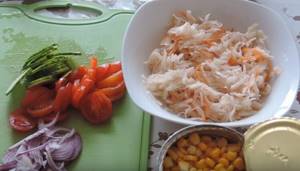
Mix everything together in one plate, season with oil and, if desired, sprinkle with chopped herbs.
Bon appetit!
Corn selection
Corn for fishing can be used canned or in the form of artificial special fish bait. Among the canned ones, the brands “Bonduelle” and “Vernet” have become very popular. Among artificial products, the leaders are “Bait Tech”, “Sensas”, Dynamite Baits.” However, this type of raw material for bait hides a number of disadvantages. The grains inside the jar may be boiled, not whole, without a pronounced aroma.
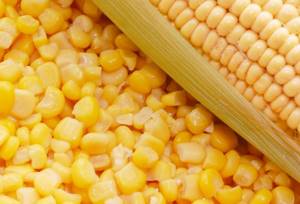
They fall apart on the hook and are not suitable for fishing, and the fish will simply ignore the hard ones. It is better to buy a raw vegetable and prepare it yourself according to one of the developed recipes. Fresh cobs should have a bright yellow color, rich smell and taste, and large, uniform grains.
Did you know? Carp and carp are color-sensitive fish species, so they are attracted to the bright yellow hues of corn kernels.
